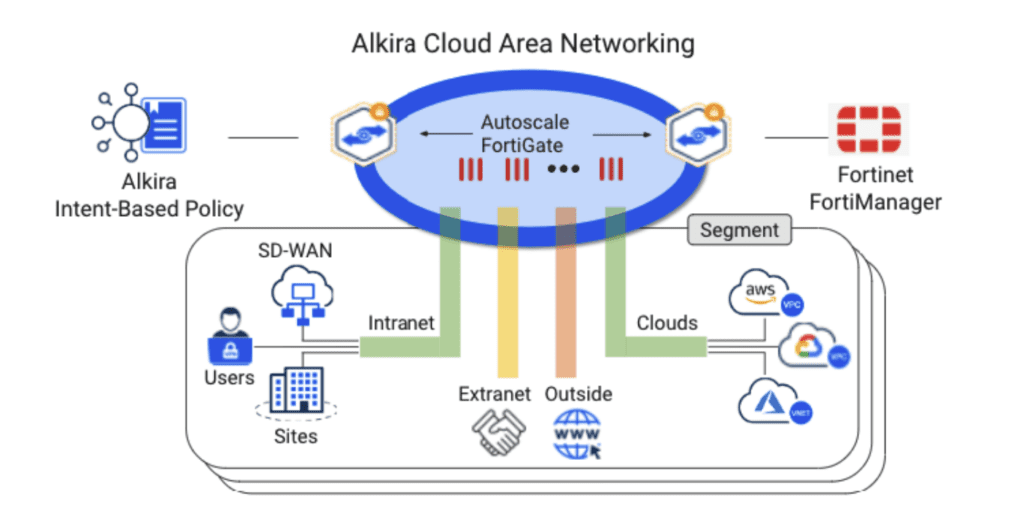Alkira Partners With Fortinet to Secure Cloud Networks
Alkira today announced it has integrated its cloud service for connecting multiple networks with firewalls from Fortinet.
Announced at the AWS re:Inforce event, the integration makes it possible to automate the configuration and deployment of Fortinet firewalls via the FortiManager platform using a control plane that integrates with the networking services provided by multiple cloud service providers.
Ahmed Datoo, chief marketing officer for Alkira, said the alliance with Fortinet is in addition to existing support for firewalls from Palo Alto Network.
Alkira is making a case for a control plane for cloud networking that integrates with the application programming interfaces (API) exposed by various cloud service providers. As a result, there is no need for an IT team to deploy agent software on each cloud service to integrate the Alkira service, noted Datoo.
As organizations increasingly deploy workloads across multiple clouds, managing and securing each of the networks that cloud service providers give them access to has become challenging. The Alkira platform is designed to provide a single pane of glass for configuring networking and security services spanning multiple clouds, said Datoo. Those organizations can either use the frameworks provided by vendors such as Fortinet to manage individual elements or use an instance of the open source Terraform tool to programmatically invoke services, he noted.
The challenge organizations face when using multiple clouds is that each one is typically managed in isolation. As a result, IT teams find themselves dedicating IT staff to mastering the various tools required to manage these platforms. Over time, however, the total cost of IT starts to rise as each cloud platform is added to the extended enterprise. Alkira reduces those costs by unifying the provisioning and management of multiple cloud networks, said Datoo. It’s up to each IT organization to decide which cloud platform to use to deploy the Alkira platform to accomplish that goal, he added.
The alliance between Alkira and Fortinet is only the latest example of the convergence of network and security operations. While cybersecurity teams are still needed to define security policies, much of the routine management of firewalls and other security platforms is now handled by network operations—in part, to make up for the chronic shortage of cybersecurity personnel. Network operations, meanwhile, are slowly being integrated with other IT operations workflows to enable organizations to programmatically manage entire IT environments without requiring as many dedicated network specialists.
In the meantime, the attack surface that security teams are being asked to secure continues to expand in the age of the cloud. The issue, of course, is that the size of most organizations’ security teams remains constrained. The only way to secure all those cloud environments at scale is to rethink the entire approach to security operations. In most cases, those approaches were defined in an era where most workloads were deployed on on-premises IT environments that, in comparison, were comparatively simple to secure.




